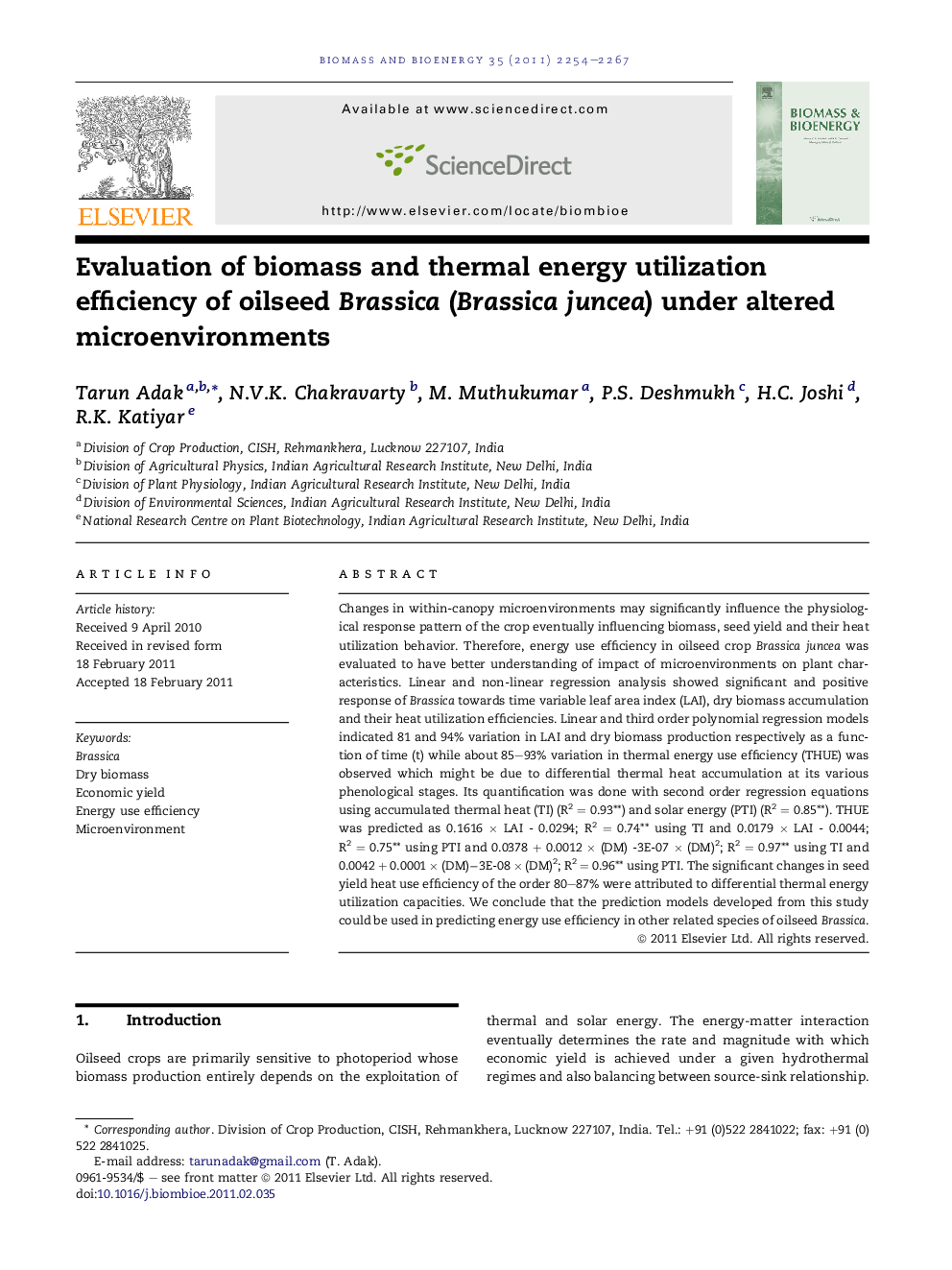| Article ID | Journal | Published Year | Pages | File Type |
|---|---|---|---|---|
| 677776 | Biomass and Bioenergy | 2011 | 14 Pages |
Changes in within-canopy microenvironments may significantly influence the physiological response pattern of the crop eventually influencing biomass, seed yield and their heat utilization behavior. Therefore, energy use efficiency in oilseed crop Brassica juncea was evaluated to have better understanding of impact of microenvironments on plant characteristics. Linear and non-linear regression analysis showed significant and positive response of Brassica towards time variable leaf area index (LAI), dry biomass accumulation and their heat utilization efficiencies. Linear and third order polynomial regression models indicated 81 and 94% variation in LAI and dry biomass production respectively as a function of time (t) while about 85–93% variation in thermal energy use efficiency (THUE) was observed which might be due to differential thermal heat accumulation at its various phenological stages. Its quantification was done with second order regression equations using accumulated thermal heat (TI) (R2 = 0.93∗∗) and solar energy (PTI) (R2 = 0.85∗∗). THUE was predicted as 0.1616 × LAI - 0.0294; R2 = 0.74∗∗ using TI and 0.0179 × LAI - 0.0044; R2 = 0.75∗∗ using PTI and 0.0378 + 0.0012 × (DM) -3E-07 × (DM)2; R2 = 0.97∗∗ using TI and 0.0042 + 0.0001 × (DM)−3E-08 × (DM)2; R2 = 0.96∗∗ using PTI. The significant changes in seed yield heat use efficiency of the order 80–87% were attributed to differential thermal energy utilization capacities. We conclude that the prediction models developed from this study could be used in predicting energy use efficiency in other related species of oilseed Brassica.
